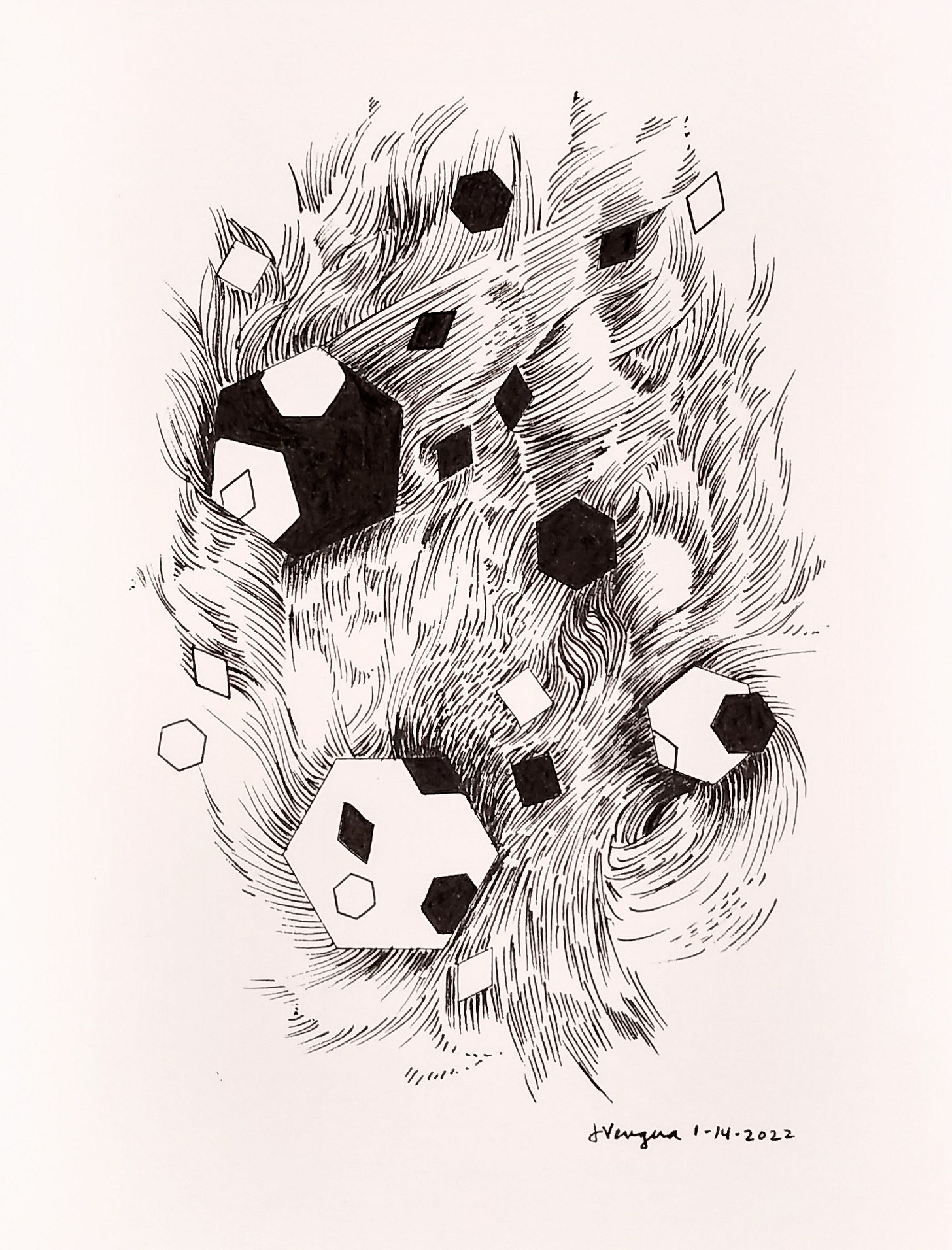1/15/2022 #48
Tsunami, post-new year work mode, drawings, Henri Michaux, psychedelics, Teresita Fernandez (fire), godwits, Maura Thomas (on attention), Nathaniel Drew, and vocalists Y'egas and Arooj Aftab.
UPDATE
You know those mornings when you wake up and find yourself reaching for the mobile phone, first thing? You think: “Naw, put it down – why didn’t I leave it on the dining table?” Or you pick it up, and maybe you wish you hadn’t. This morning I picked it up. And the first thing I saw was a text message: “TSUNAMI ADVISORY.” But I was thankful to receive it, and glad I picked up the phone—since I live just a few blocks from the harbor (on a hill, fortunately).
I feel for the folks in Tonga, where an underwater volcano exploded, sending its tsunami ripples out across the Pacific Ocean. No big wave came crashing down on us, although I hear that a parking lot was flooded in Santa Cruz, a few miles north of where I live.
Now that New Year’s celebrations are over (though soon to be followed by the Lunar New Year of the Tiger), I’m settling into work mode and scheduling my workflow. I suppose that sounds very organized; sometimes I’ll even use a personal Kanban board online to sort things out. Yet, part of me is always trying to make sure chaos doesn’t happen, and gearing up to pace my work between several clients can be stressful. Like meditation, taking short breaks to make art—usually small sketches or line drawings on paper—helps me to slow down and focus. So I try to remind myself to take time to do just that.
ART
I finally made a few drawings:
Although I’ve taken a few college art classes, I’ve never attended art school. So I do research in my own meandering way; but I wonder, sometimes, what I would’ve learned if I had suffered through the terrors (so I’ve been told by those who know) of art school. For example, I just learned about Henri Michaux and Tachisme, and about other European artists (and writers) influenced by psychedelics in the pre-hippie 1950s. The term “tachisme” was coined for that art movement the year I was born, 1951.
I was surprised to see in Michaux’s works a gestural similarity with some of the drawings and asemics I’ve been doing lately, especially in what I’ve been calling the “Geomancy” series. In an article for Hyperallergic, Joseph Nechtaval described Michaux’s line as that of a “nervous robot seismograph” where “habitual values and expectations of solidity no longer exist ipso facto.” Reading about Michaux (who was also a poet) and his peers makes me wonder about my own experiences with psychedelics in my 20s—which were fairly considerable—and the extent to which it may have influenced my sense of line and color, as well as my expectations about form (and “solidity”) in both writing and art.
A nasty little voice in my head goes “Oh, jeez, here’s another Boomer going on about their hippie days,” though in fact the topic is contemporary and popular enough that Substack has several newsletters dedicated to psychedelia; check out, for example, Michael Pollan’s newsletter, The Microdose, or Zach Haigney’s The Trip Report. But hey, I am not going down that ageist road of negative self-talk. Think of this as a brief introduction to Part 1, which I’ll discuss in next weekend’s newsletter. Yay, another rabbit hole!
LINKS
Teresita Fernandez’ Fire:
Fascinating article about Hudsonian godwits’ almost-magical ability to sustain long-distance migrating (Smithsonian).
An article about “attention” by Maura Thomas in Harvard Business Review reminds me of how often I allow distraction to interrupt reading, writing, making art, or any other task that I set for myself. Lately I’ve been feeling satisfaction, and even joy, from single-tasking: deciding to do one thing for an hour or more, and not distracting myself by checking email or my phone, or switching between multiple tasks.
“. . . the problem isn’t just that an email interrupts your work. It’s also the fact that being tethered to your email inbox conditions you to expect an interruption every few minutes, which chips away at your attention span. You then become so afraid of forgetting to do some small task — like sending an email or forwarding a document — that you start to do everything as soon as you’ve thought of it; but then you end up getting sucked into your overflowing inbox before you know it. Moreover, knowing that you have a catalog of all the world’s knowledge at your fingertips — in terms of the internet on your smartphone — makes it difficult to be comfortable in a state of “I don’t know,” and hard to avoid the distracting temptation to “find out now.”
But it’s not just about choosing; it’s also about what your brain is conditioned to expect (interruptions).
“Use those times when your technology is tamed and your do-not-disturb sign is up to get used to single-tasking: open only one window on your computer screen, and give your full attention to one task until it’s complete, or until a designated stopping point. Take breaks throughout the day where you step away from your computer. Try to “unplug” completely (no technology) for at least an hour or more, as often as you can. Try it for 15-20 minutes at first; then build up to an hour, or even 90 minutes.”
Nathaniel Drew on taking a psychedelic substance for the first time, and coming to terms with being a “man” and being vulnerable.
SOUNDINGS
T’boli singer Y’egas sings about the mermaids of Lake Sebu (Philippines):
Arooj Aftab on Tiny Desk Concert:
Time for me to get off this keyboard and go to bed.
More next weekend . . .







